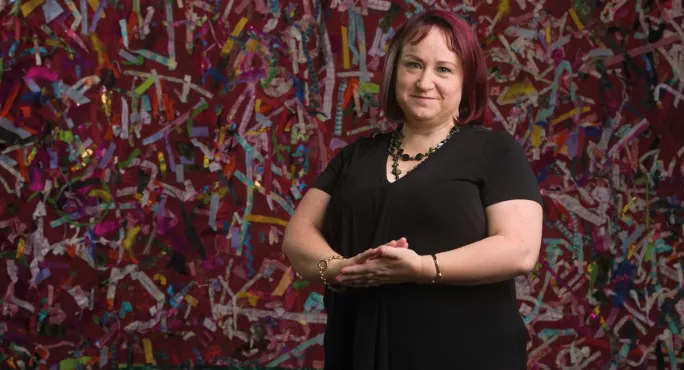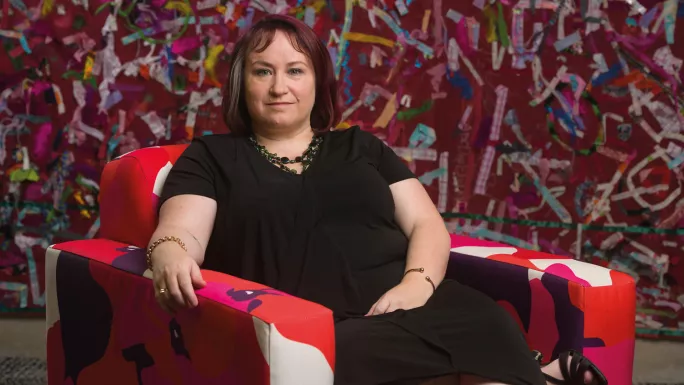- Home
- How teachers ‘contribute’ to disruptive behaviour
How teachers ‘contribute’ to disruptive behaviour

“I was extremely disruptive at school - I wasn’t stimulated and I didn’t like people telling me what to do,” recalls Linda Graham. “When I was 16, my principal said, ‘You’ve passed the maximum number of unexplained absences. You have two choices: repeat a year or leave.’ So I left.”
It’s not the school experience you’d usually expect one of the world’s leading researchers into disruptive behaviour to have had. But then, perhaps, there is some truth in the adage that “it takes one to know one”.
Graham, an associate professor at the faculty of education at Queensland University of Technology, Australia, recognises what it is to be the disruptive child - “because I was one of those kids”, she laughs. As such, she is well placed to pick apart what causes someone to behave like that. What she has found is that those reasons are much more complex than many teachers might think - and that teachers can sometimes be a part of the problem.
Leaving school with nothing
Having left school at 16, Graham had a long journey to academia. Left frustrated by six years of secretarial work, she then took her school exams and went on to study English literature and modern history at university. There, she took a minor in education and fell in love with the subject, eventually going on to study for a master’s and a PhD. Graham chose to specialise in studying disruptive behaviour.
Her research since then has been multifaceted. In 2011, she completed a major project researching the experiences of children in behaviour schools - special schools for children who exhibited challenging behaviour - in Australia. She concluded that these schools were a product of a broken system.
“Those schools are the ambulance at the bottom of the cliff,” she explains. “What I became interested in is where’s the fence at the top? Why are so many panels broken?”
That’s a question she’s currently exploring through a six-year longitudinal study. Tracking children from prep to grade 5 (the first six years of schooling in Australia), Graham is looking at learning, language, behaviour and how children feel about school. A key aspect is looking at teacher-pupil relationships and how each experience in school shapes the next.

“[Humans] develop ‘working models’ for relationships, starting in the family,” she explains.
“Research shows the same occurs in school through relationships children have with, let’s be honest, their second caregiver - their teacher.
“Children internalise an impression about how relationships work. They take that into their next classroom. It carries on through school - each interaction shapes them.
“If you tap into the discourse in schools, on Twitter, everywhere else, it’s that disruptive behaviour results from an amalgam of the student’s temperament and home upbringing. But I think it’s really important that primary and secondary teachers remember, ‘No, this difficult kid didn’t just parachute in, they’ve been moulded by the school system for years.’”
Essentially, if a child’s early teacher-pupil relationships are fraught, they may anticipate this in future encounters and act up through frustration or become despondent. Conversely, if those relationships are positive, there is a reduction in classroom conflict (quality teaching also contributes to this outcome).
“We’ve found that the lower the emotional support in the classroom, the higher the conflict,” she reveals. “Also, where teachers report conflict but also a close relationship (there’s warmth and they still like the child), that works as a protective factor against negative trajectories, such as the child developing a dislike for their teacher and/or generalising that dislike to school, learning or all teachers, which would undoubtedly affect behaviour and academic performance.”
Of course, teachers won’t hit it off with every pupil, she admits. “However, what I do think is incumbent on teachers is to never demonstrate dislike of a pupil,” says Graham. “The ideal is a close and trusting relationship in which the child feels they can approach their teacher - that their teacher likes them. That can be reflected in the way that teachers reprimand. Yes, you get in trouble, but it’s quick. You’re forgiven.”
To provide pupils with emotional support, she suggests a number of options are available.
“You’re looking for things like how aware teachers are of what’s going on with students, whether they address pupils’ problems, regard for student perspectives, whether they bring everyone into the lesson, whether they smile and use pupils’ first names,” says Graham.
This is especially important for kids who are easily dismissed as “troublemakers”, she notes. Teachers might typically not form such positive relationships with them - often because it’s harder to do so - but they may be the most in need.
One way she suggests that teachers could nurture relationships is by showing genuine interest in everyone’s views.
“Pressure on teachers can distort that practice. I don’t blame teachers for this. We’re demanding that they produce quality teaching, but we’re not providing the environment conducive to it,” she argues.
“So when they ask questions to check understanding, if they’re under pressure and time-poor, they ask the kid who they know will give the right answer.”
Pressure on teachers to perform
Graham believes that teachers need to resist such a temptation and should aim to draw all children into discussions.
Her study is also exploring the support interventions that teachers are implementing for pupils, as well as how appropriate they are.
“What’s frightening is that there are children who critically need support and are not getting it, children who are getting it for the wrong things, and children who don’t need it but are getting it,” she says.
This may come about wherever there’s a narrow focus on firefighting bad behaviour.
“The majority of teachers we’re interviewing see behaviour as the reason a child might have trouble with learning and seldom is the opposite considered: that their behaviour may be because they have a learning difficulty,” she says.
Graham believes that it’s vital that teachers work to understand what’s really behind poor behaviour - something that she’s exploring in another project, researching how teachers can de-escalate disruptive behaviour in high school.
“If you’re not careful, when you apply Band-Aids, you end up with a festering wound underneath,” she says. “Teachers need to become their own researchers, asking ‘What precedes the problem?’ and ‘What am I doing to contribute?’”
That second question may be tough to swallow. But in classroom observation, she says she often sees that teachers inadvertently contribute to disruptive behaviour, such as by overlooking a child who has their hand up for a long time.
“It’s hard for teachers, as there’s so much going on [in the classroom,” she says. “But those disruptive kids are going to chew up your time anyway, so careful observation is worth it.”
Another tactic she advocates is frank discussion with the child about why they have misbehaved.
With an understanding of what’s behind certain behaviours, it’s then vital to matchmake an appropriate intervention.
“When we ask teachers about what strategies they use for children they have concerns about, there’s not a lot of [intervention tactics that are] ‘fit for purpose’. We ask ‘Does that match the concern you have?’ And it’s quite fascinating that they’ve not necessarily thought it through.”
Yet using the wrong intervention can have negative consequences.
“Sometimes a teacher assumes a student is behaving a certain way because they’re looking for attention, so they ignore it. If the student is attention-seeking, that’s the correct response,” she says. “But you have to be certain. If you ignore them in response to task avoidance, for example, you risk exacerbating the behaviour.”
Graham believes that by addressing root causes, behaviour can be improved, kids can get appropriate support and teachers can be freed up to teach.
“It’s very complex,” she admits. “I honestly believe that teaching is one of the hardest jobs in the world.”
Complex, yes, but empowering, too.
“It’s within teachers’ power to change the dynamics in a classroom,” she notes.
And getting it right could change pupils’ lives, she believes: “We’re interested in whether, if a child has been in a negative environment, that [behaviour] is mediated if they go into a positive classroom. We’re already seeing evidence of that.
“One teacher talked about a child who joined her class, with a reputation for being impossible, such that the policy was that he had to go home at 11.30am every day. But that has been turned around. What she worked on foremost was establishing a close relationship, where he felt he wasn’t [being] judged; he could go to her, it was OK to make mistakes. Now he’s back in school full-time, no problem.”
Jessica Powell is a freelance journalist. She tweets @jpjourno
Keep reading for just £1 per month
You've reached your limit of free articles this month. Subscribe for £1 per month for three months and get:
- Unlimited access to all Tes magazine content
- Exclusive subscriber-only stories
- Award-winning email newsletters



